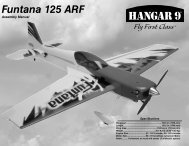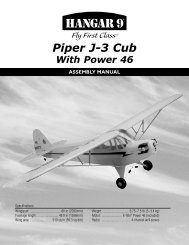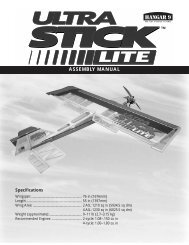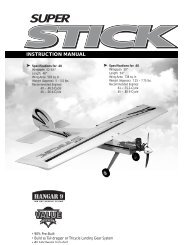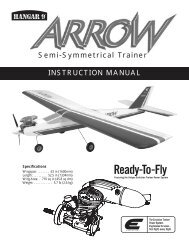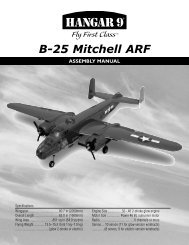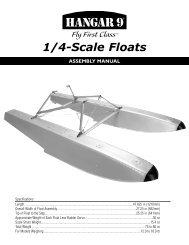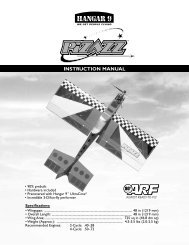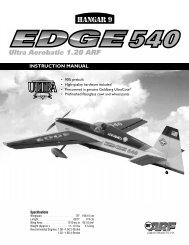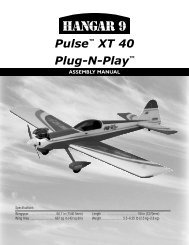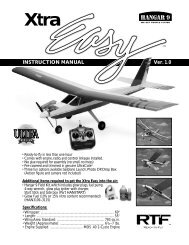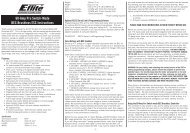Piper J-3 Cub - Hangar 9
Piper J-3 Cub - Hangar 9
Piper J-3 Cub - Hangar 9
Create successful ePaper yourself
Turn your PDF publications into a flip-book with our unique Google optimized e-Paper software.
Recommended CGAn important part of preparing the aircraft for flight isproperly balancing the model. This is especially importantwhen various engines are mounted.Caution: Do not inadvertently skip this step!The recommended Center of Gravity (CG) range for the<strong>Piper</strong> J-3 <strong>Cub</strong> is 3 1 / 4" (82.5mm) behind the leading edgeof the wing against the fuselage. It is suggested to start atthe forward end of the range until comfortable with theflight characteristics of your aircraft. If necessary, movethe battery pack or add weight to either the nose or thetail until the correct balance is achieved. Stick-onweights are available at your local hobby shop and workwell for this purpose.PreflightRange Test Your Radio Step 1Before going to the field, be sure that your batteriesare fully charged, per the instructions included withyour radio. Charge both the transmitter and receiverpack for your airplane. Use the recommended chargersupplied with your particular radio system, following theinstructions provided with the radio. In most cases theradio should be charged the night before going out flying. Step 2Before each flying session, be sure to range check yourradio. See your radio manual for the recommendedrange and instructions for your radio system. Each radiomanufacturer specifies different procedures for theirradio systems. Next, start the engine. With the modelsecurely anchored, check the range again. The range testshould not be significantly affected. If it is, don’t attemptto fly! Have your radio equipment checked out by themanufacturer. Step 3Double-check that all controls (aileron, elevator, rudderand throttle) move in the correct direction. Step 4Check the radio installation and make sure all the controlsurfaces are moving correctly (i.e. the correct directionand with the recommended throws). Test the motor tomake sure the speed control is operating properly.Check all the control horns, servo horns, and clevises tomake sure they are secure and in good condition. Replaceany items that would be considered questionable. Failureof any of these components in flight would mean the lossof your aircraft.Note: Keep loose items that can get entangledin the propeller away from the prop. Theseincluded loose clothing, or other objects suchas pencils and screwdrivers. Especially keepyour hands away from the propeller.32



